The line from Elizabeth Taylor to Chappell Roan’s iconic blue eyeshadow is actually pretty direct. But while it’s easy to trace things from Point A (Liz Taylor) to Point B (Divine) to Point C (Chappell Roan) and Point D (beyond?), it’s the connective tissue in between, linking these people and their eyelids together that tells us so much about what we associate with femininity, with class, with power, and with the color blue.
Blue eyeshadow, as Allure notes, is having a moment — whether it’s making an appearance on the eyelids of Mia Goth in both X and Maxxxine, Samantha Robinson in The Love Witch, Nicola Peltz in Lola, the near entirety of the Euphoria cast, the straight dude main character in National Anthem, Lady Gaga’s Harley Quinn in the upcoming Joker sequel, your favorite artist’s favorite artist Chappell Roan, or on make-up TikTok creators everywhere this spring and summer. Blue eyeshadow is here in a big way, but it also didn’t come out of nowhere. Blue lids have an enduring history, and it’s unsurprising to see them bubbling to the surface now amid state repression and economic recession. The lasting prominence of blue eyeshadow is also tied to drag performance and queer history. Allow me to explain…
Blue Eyeshadow as Iconic [Gay Ally] Elegance
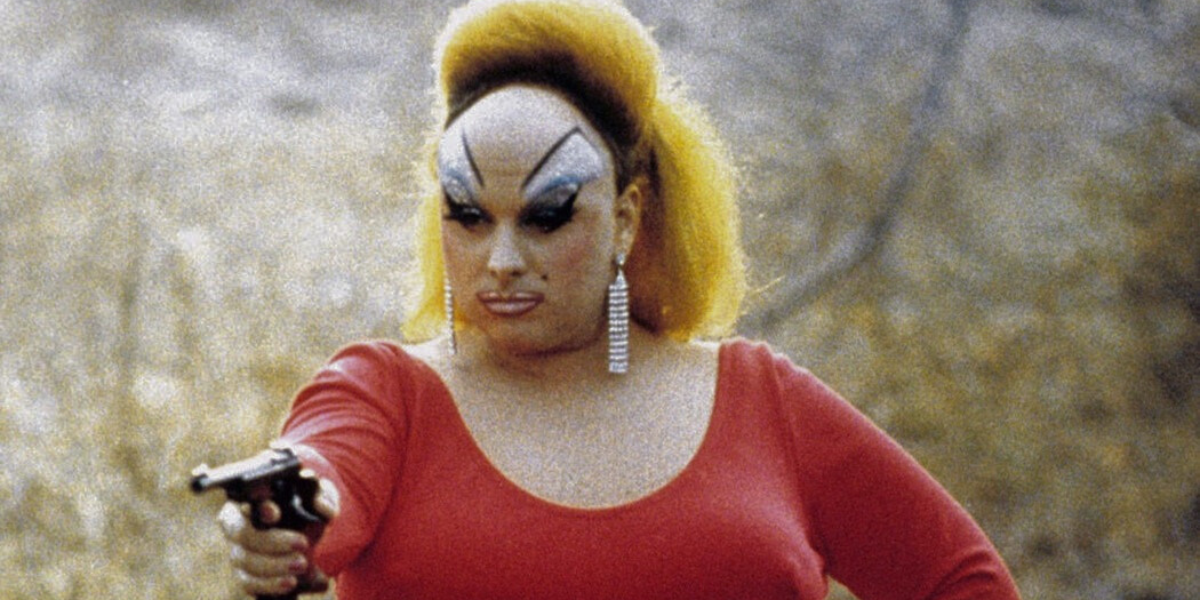
Legendary drag star Divine wanted to be Elizabeth Taylor.
And she didn’t just want to be Liz Taylor; she became her. She dressed like her frequently and for fun, drawing on Taylor’s glamor as she drew on her own version of the icon’s famed cosmetics. This was Divine’s introduction to drag, dressing like Elizabeth Taylor for parties. Filmmaker and famed filth-monger John Waters, who was childhood friends with Divine before they began working together on movies, said of the drag persona:
“Before he was Divine, he was a normal drag queen for about five minutes. He dressed as Elizabeth Taylor. Idolized Elizabeth Taylor. And went out on dates with his girlfriend named Diane dressed as Elizabeth Taylor. Which is really odd when she lived with her parents. ‘Diane, your date’s here!’ and it’s Glenn Milstead dressed as Elizabeth Taylor.”
I remember my mother and grandmother talking about Elizabeth Taylor. They referenced her violet eyes, her double eyelashes, her elegance, that she was “the most beautiful woman in the world,” with a kind of awe. For those generations — “Greatest” and “Boomers” — Liz was an icon, not just for being pretty, but for her fire, her string of love interests and marriages, and for playing complex female roles. She also capitalized on her fame, releasing cosmetics and perfumes, the iconic White Diamonds setting the bar when it came to the wild popularity of celebrity fragrances.
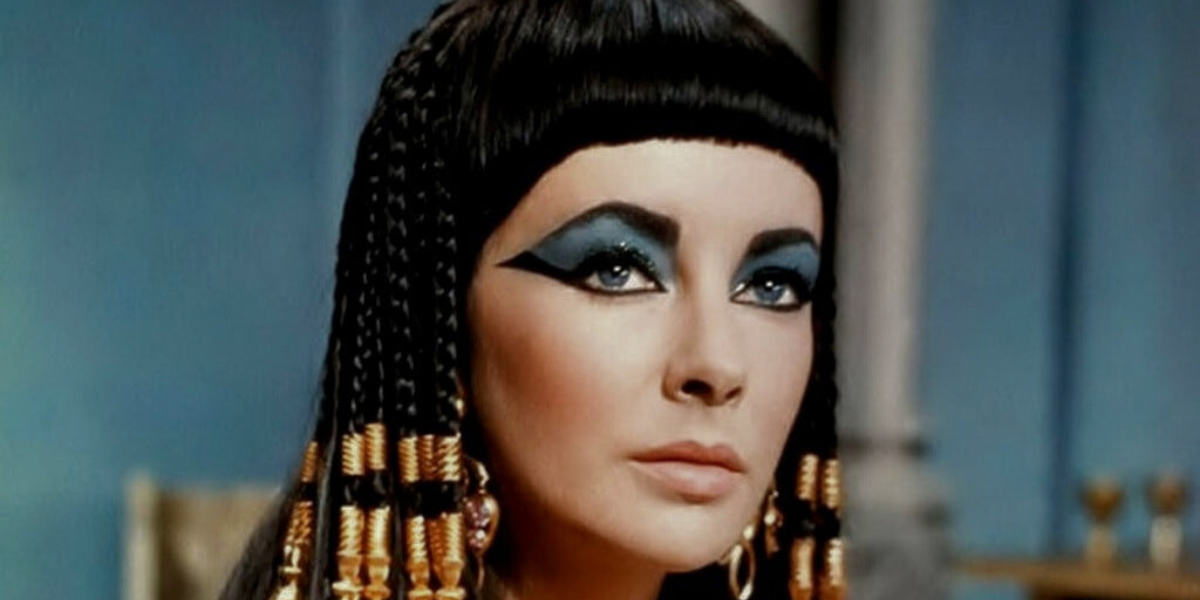
Taylor notably wore blue eyeshadow for her iconic, titular role as Cleopatra in 1963. She did her own makeup for the film, as was not uncommon, and was known for wearing blue or purple eyeshadow to highlight her legendary eyes. She would also wear her makeup out after a day of filming.
“Elizabeth Taylor made the public want to buy what she already had to give,” writes William Mann in How to Be a Movie Star: Elizabeth Taylor in Hollywood
Though I could only find sources that are more word-of-mouth than anything else, the surge of blue eyeshadow and the cat eye look’s popularity in the 1960s can be traced to Taylor’s look in Cleopatra. The cat eye style of eye makeup is also a strong visual component of 1965’s Faster Pussycat! Kill! Kill!, which didn’t have mainstream influence like Cleopatra but which was a noted inspiration for John Waters.
Because your everyday woman wanted to emulate Taylor, and didn’t need to break the bank to buy some blue eyeshadow or draw on a cat eye to do so, she did just that. Divine’s earnest emulation of Elizabeth Taylor in her nascent years, before changing the culture of drag forever, is a part of that, too, of wanting to tangibly capture a fierce, uncompromising, yet elegant femininity.
Elizabeth Taylor’s icon status within the gay community — and she had many gay friends — would go on to be cemented by what became her lifelong activism and advocacy for people with HIV and AIDS. She was one of the first major celebrities to speak out about the AIDS crisis, and did so in a huge way in 1985 when she hosted the first celebrity fundraiser for the APLA (AIDs Project Los Angeles).
Elizabeth Taylor said, “if it weren’t for homosexuals, there would be no culture,” and who could disagree? It’s fitting that her legacy would go on to inspire a drag queen who changed the course of drag forever, taking it from demure entertainment and into the realm of experimentation and countercultural art.
Blue Eyeshadow as [Unapologetic] White Trash
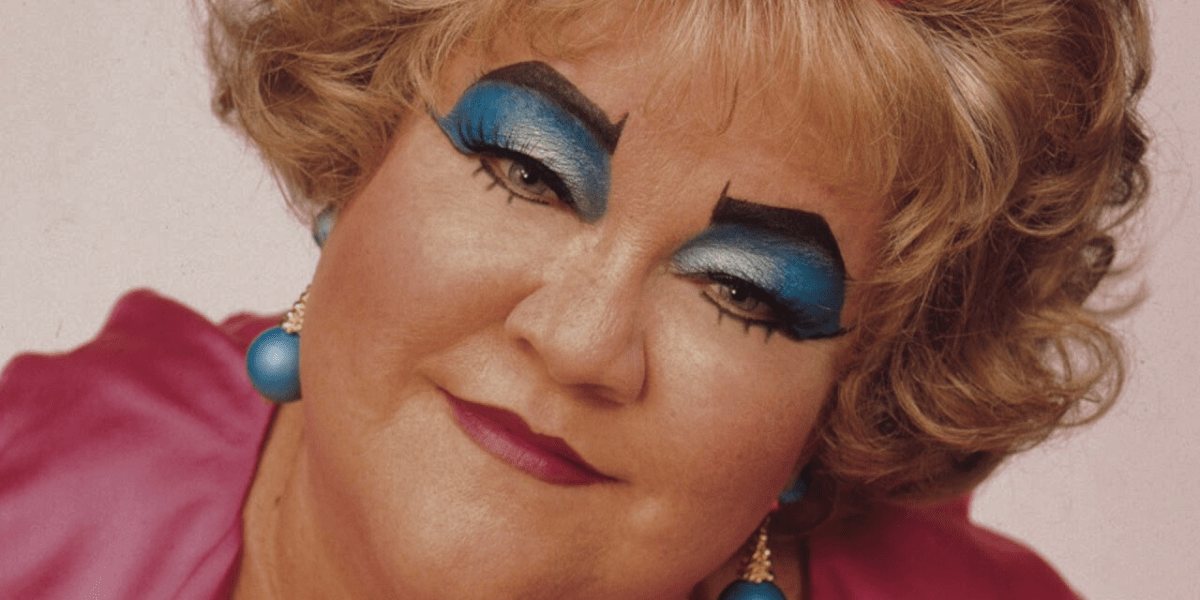
But then, how did the look of such an influential icon come to be synonymous with tackiness, or, even, with a maligned and abused, often tragic, female figure? We see the former everywhere.
If I say, “a woman wearing cheetah print and blue eyeshadow” what comes to mind? When we flip through depictions of working class white women in blue eyeshadow, those who are emulating Elizabeth Taylor’s approach to cosmetics, we find they’ve been so often portrayed as comical or pitiful or crass. They seem to exude a kind of self-confidence that is a punchline, because how dare a poor woman take pride in her appearance? These women, who would’ve admired Elizabeth Taylor, adopted blue eyeshadow when it was experiencing a wave of popularity — and then held onto the style long after it had gone “out of fashion.” These depictions of the blue-lidded working-class loud-mouth are everywhere, from Mimi, the antagonist on the Drew Carey Show whose self-confidence is a punchline because she’s “obviously” too much, to a very similar character in Zinnia, Matilda’s mom in Matilda, who “chose looks” and “not books” and ultimately signs custody of her child away because she is that much of an unfit parent for a sweet, intellectual, modestly dressed girl like Matilda (who goes into the care of the equally modest and intellectual Miss Honey), to the absolute outsiders in John Waters’ Desperate Living who don blue eyeshadow and engage in, well, some of Autostraddle’s favorite things such as lesbian sex and cannibalism.
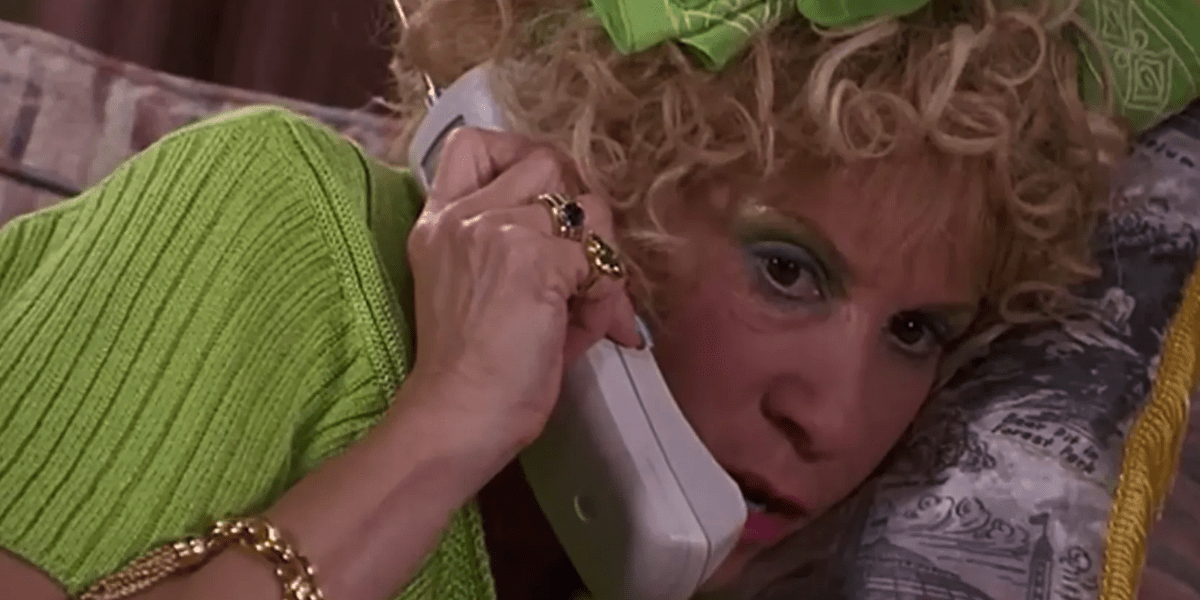
It’s still a marker of a woman who has, as a punchline, an over-inflated sense of self, whose fierce femininity is actually perceived as a threat. This even carries into the game, Stardew Valley (released 2016), where the alcoholic, loud and blunt, trailer-dwelling Pam also wears eyeshadow in a distinct purple hue. She’s white trash coded — she’s the only one in the game who lives in a trailer as opposed to even a modest yet idyllic cabin — and the eyeshadow practically comes with that role. So, when blue eyeshadow became dated, it became symbolic of a certain kind of woman, one who hung onto ideas about beauty and elegance that did not keep up with more conservative or properly “feminine” norms, one who might even be brushed off as delusional, living in her own world, where she dares to consider herself beautiful.
And while the first ingredient in Divine’s approach to drag was elegance, performed tackiness soon eclipsed her old drag persona. Desperate Living is considered one part of a trilogy that also includes Female Trouble and Pink Flamingos, wherein the main characters literally compete to be the “filthiest people alive.” Somewhere between wanting to be Elizabeth Taylor and embodying the role of a lesbian/pansexual woman who advocates for murder and eats dog shit, Divine’s persona followed the descent of blue eyeshadow from Taylor, through the aspirations of working class women, and down into the most depraved depictions of white trash that John Waters’ devious gay mind could concoct. Divine, Waters, and all their collaborators, however, embraced tackiness and celebrated these qualities that were derided by middle class Americans right along with queerness and gender nonconformity. The queering of blue eyeshadow was a celebration of outsider status, whereas more straight media tended to use it as a marker of difference that was to be derided and looked down upon. When Divine wears it, she — and we — are in on the joke.
Blue Eyeshadow As Self-Possessed Yet Tragic [Sometimes Unhinged] Woman of the Night
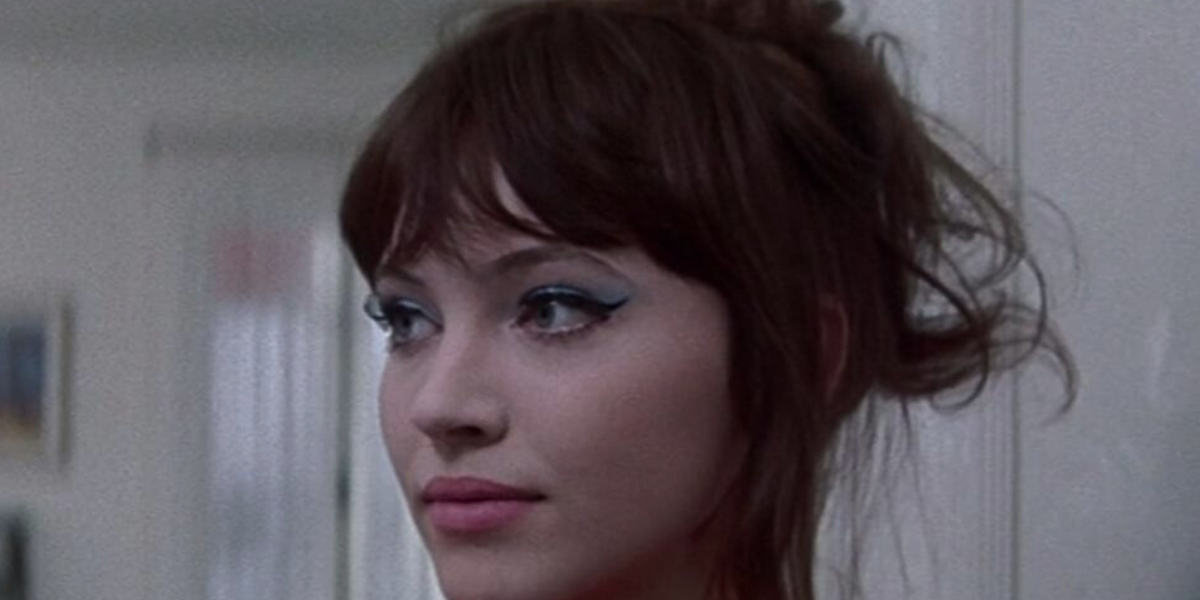
But it’s not just the passage of time and the machinations of working class America that have contributed to blue eyeshadow’s particular implications and intersections with queer culture, especially queer nightlife. The first ever appearance of blue eyeshadow in film is in Une Femme Est Une Femme (A Woman Is A Woman), a French film that premiered in 1961. Angéla, a stripper, wants to have a child, but her lover is not ready. So, she begins an affair with a second man, playing the two off each other in an attempt to realize her dreams. She wears a similar light blue color to the hue Twiggy famously modeled in the 1960’s, marking her as fashionable, but also somehow not of the daylight world, someone a bit dreamy.
In this context, blue eyeshadow went on to become synonymous with a certain kind of nightlife performer, a woman with tragedy behind her blue-lidded eyes who at the same time exists somewhere along the scale of being self-possessed, a performer, and a person in her own right. She’s never married, but often the love (or lust) interest. She’s famously seen in Isabella Rossellini’s performance as the multi-faceted and abused lounge singer, Dorothy Vallens, in Blue Velvet (1986), before that in Liza Minelli’s Sally Bowles in Cabaret (1976), and in the same year in Jodie Foster’s speakeasy performer in the child-cast parody Bugsy Malone. More recently, she’s seen in Jessica Lange’s character in American Horror Story: Freak Show (2014), particularly when she performs “Life on Mars” and “Gods and Monsters,” and on multiple P-Valley (2020-present) characters, who whether straight or queer are all involved in or adjacent to sex work and nightlife.
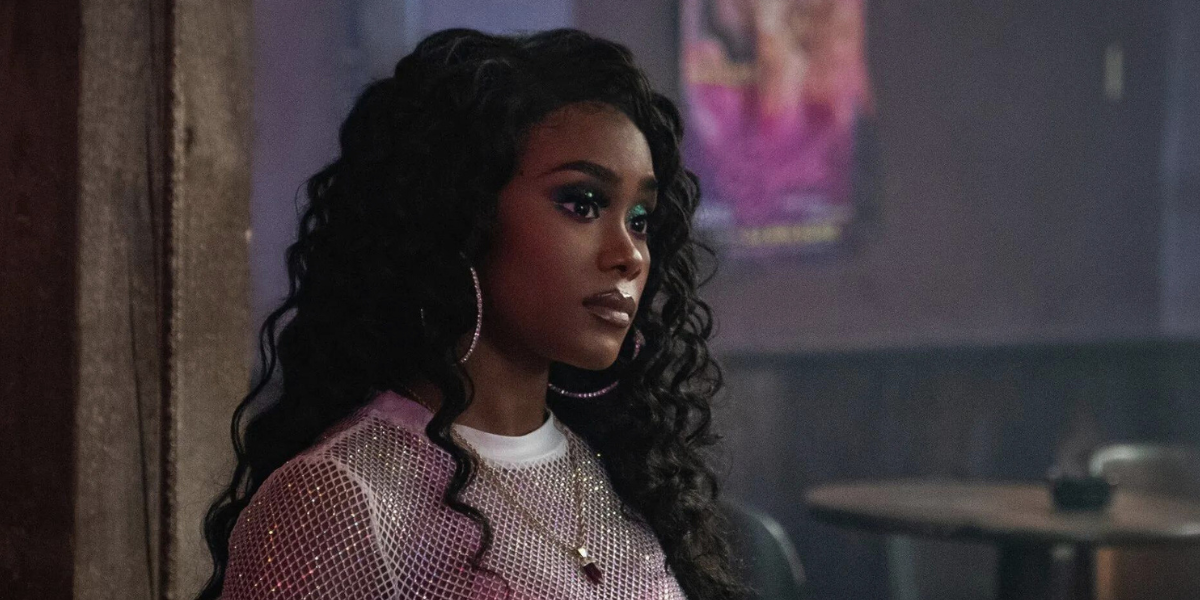
Blue stands out against any skin tone, being one of the rarest shades in nature (sky aside), and it stands out in the dark, making it a natural pick for nightlife. But it also seems to represent a certain kind of person who isn’t fated for the white picket fence life. Likely, this legacy extends farther back than 20th century nightlife, and into centuries prior, where painted ladies, like the sex workers of the Victorian era who wore makeup in contrast to the bare-faced ladies of the time, or like those of the old American West, both made their own livings as sex workers and entertainers, and simultaneously shocked and enthralled their fellow townsfolk with their vivid makeup and flamboyant clothing. According to The Gay Times, the “frontier” of the American west in the 1800’s was a haven for queer and trans people, who found greater freedom to live authentic lives away from the more rigid society and social norms of the eastern states.
The 1866 poem by Thomas Hardy, “The Ruined Maid,” makes much of the conspicuous finery of a well-to-do self-made woman:
— “You left us in tatters, without shoes or socks,
Tired of digging potatoes, and spudding up docks;
And now you’ve gay bracelets and bright feathers three!” —
“Yes: that’s how we dress when we’re ruined,” said she.
The poem, here, points out that because she was a sex worker, the subject of this poem wasn’t beholden to the rules of polite society or Victorian modesty — instead she could dress lavishly, brightly, and “above her station” — and not just dress, either, the speaker of the poem points out how even her language has changed, and she’s started to speak in a manner more associated with the occupants of the upper class. And there’s something there, right? Divine channels “it” when she wears her floor-length red dress in Pink Flamingos, this sense she is able and willing to flaunt her outsider status with gaudy attire, bright and bold makeup, to say that there are no rules and that she can adopt anything she likes from people in more privileged positions, in power. She doesn’t live in the future, in fear, crouching and hiding herself in beiges and “no-makeup-makeup” to skirt scrutiny. Instead, like so many non-assimilative queers, Divine lives in the present, taking what she wants now. She’s not going to “settle down,” and she’s not going to conform to any code of cishet, mainstream decency. She’ll make money how she wants, live how she wants, fuck who she wants — and pearl-clutchers can eat shit.
Blue Eyeshadow as Young Girl [and Gay, Trans] Search for Identity
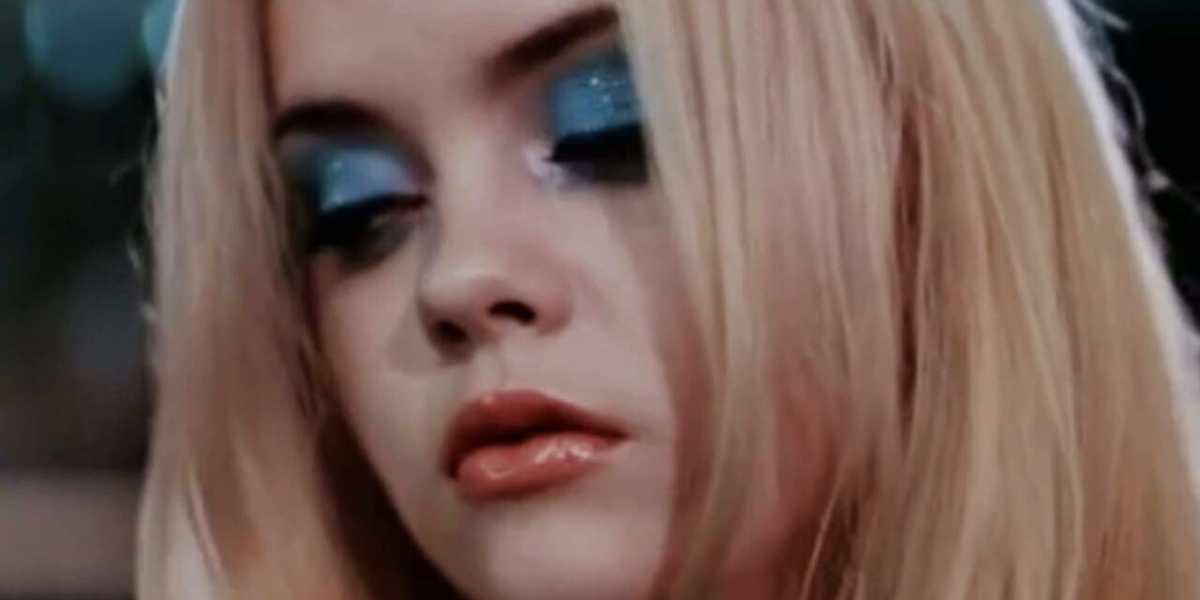
Powdery, brighter, lighter shades are often seen on characters who are dreamy, lost, looking for belonging, often through romantic love, though not always. We see two very typical (and pretty straight) examples in Christina Ricci’s Buffalo ’66 character, Layla, a kidnapping victim who falls in love with her much older captor, or in Lana Del Rey’s ever-lovelorn persona. Much has been said of the symbolism of Ricci’s role in Buffalo 66. From High Snobiety: “According to makeup artist Gucci Westman, who selected Layla’s Maybelline eyeshadow, Layla’s blue lids serve as a ‘way out.’ She elaborates: ‘[Layla’s] look evoked innocence and living in a fantasy in a non-romantic world. It was about creating her own fairytale in an anything but idyllic situation.'”
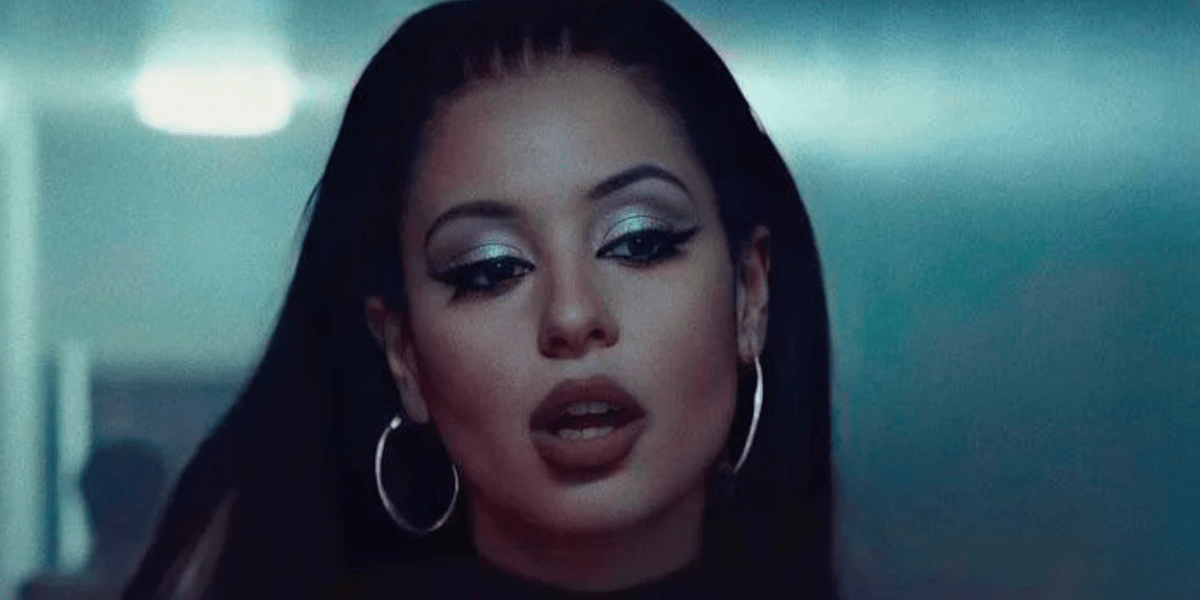
Euphoria’s makeup artist, Doniella Davy, has spoken on multiple occasions on the symbolism behind the makeup on the show, where each of the main girl characters wear a whole slew of makeup looks, including blue eyeshadow. We see dark blues on characters like Maddy or Kat when they’re either feeling self-confident and certain of their independence, or attempting to assert the same. We see powdery blue on the more unsure, doe-like Cassie, reminiscent of Layla in Buffalo 66. And, even from episode one, we see glittering blue and purple looks associated with Zendaya’s character Rue’s drug use, shimmering in the gap between reality and her altered state. A primary theme spoken on by Davy is the way each of these characters is going through it, emotionally, as they navigate an endless dramatic string of hardships and the search for their identities.
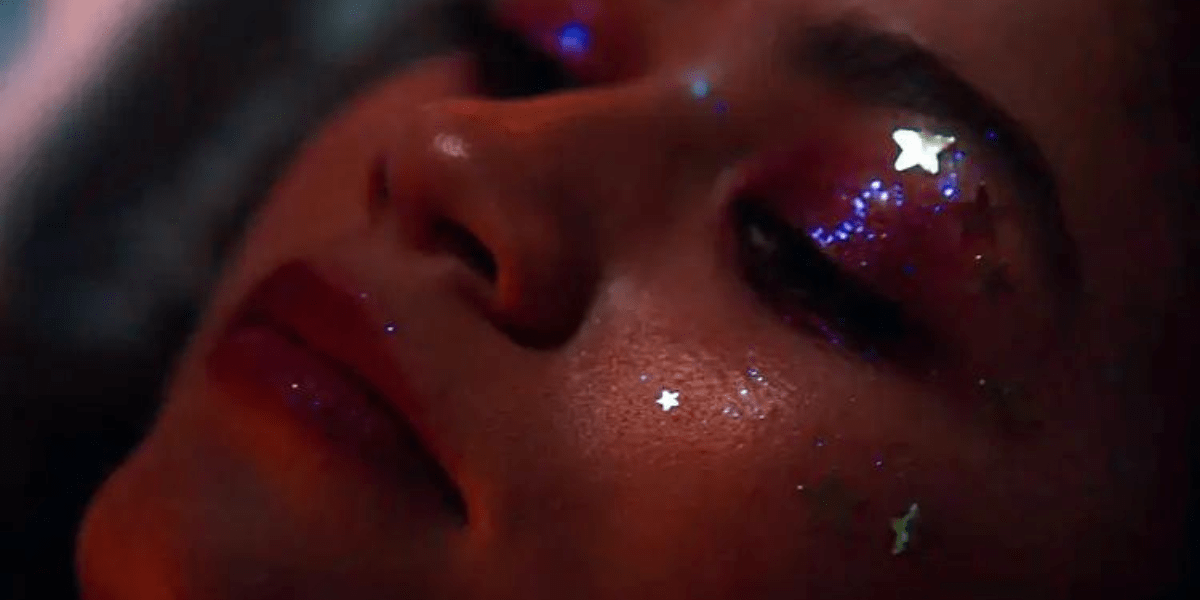
In 2024’s Lola, the titular character is, like Angéla in Une Femme Est Une Femme, a stripper. Pregnancy and starting a new chapter in life is also central to the plot. And though this film has been maligned as “poverty porn” for valid reasons, it also includes a touching dynamic between Lola and her younger sibling, Arlo, who’s a young trans girl. A central scene in the film shows Lola applying her signature powder blue eyeshadow and then also helping her younger sibling do the same. The sad-girl-cornflower-blue ties them together in their longing to leave that place, to move out together, to each start living life on their own terms, and as their authentic selves. Rarely is blue eyeshadow seen on a character as young as Arlo, but it suits her desire for a different life, the way she has to dream about getting to inhabit girlhood because her circumstances and strict, religious mother don’t allow her to exist as herself.
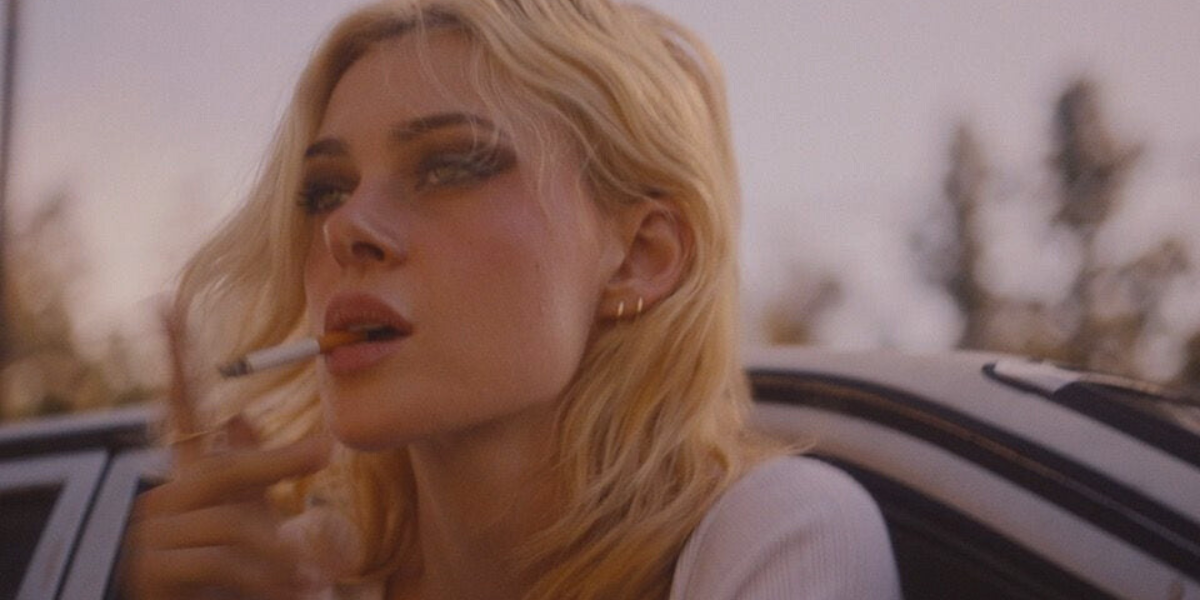
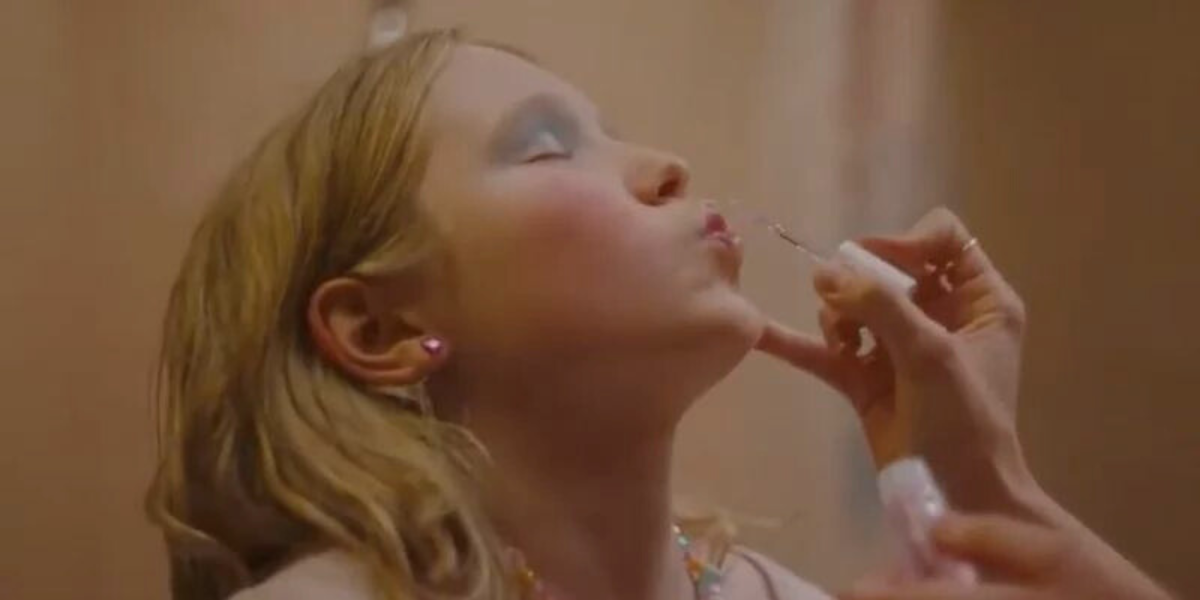
The trailer for queer rodeo film National Anthem, too, shows one character applying blue eyeshadow to another. Here, the cis/trans roles are reversed, but nevertheless, the blue is reflective of big sky country, of the possibilities that emerge when forging one’s own path against cishet norms. With both these films, perhaps, the blue eyeshadow serves as a shorthand that is more needed when the plot falls short.
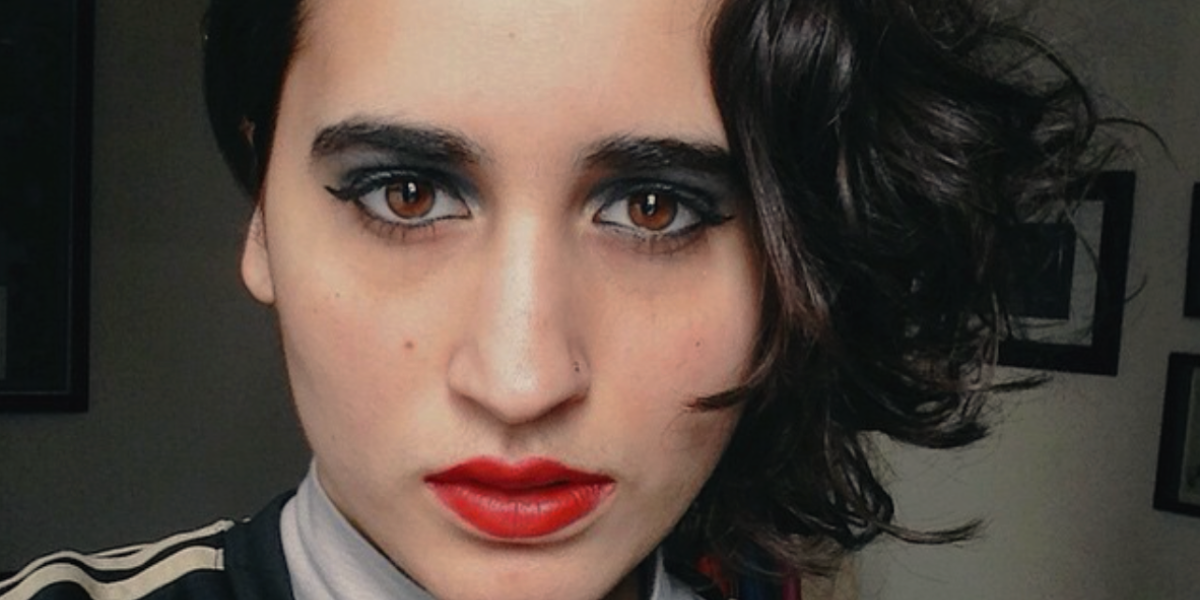
Autostraddle Managing Editor Kayla Kumari Upadhyaya shares that she actually started wearing blue eyeshadow — and sometimes blue lipstick — right when she was starting to come out publicly as queer and would often post selfies highlighting her blue-toned lids on social media. “I wouldn’t have been able to articulate it at the time, but looking back, I know that I was signaling something,” she says. “A dramatic haircut wasn’t enough; I wanted to signal with my overall aesthetic and body that something was shifting in the ways I saw myself and wanted others to see me. Blue eyeshadow was almost a cheat code for that.”
Blue Eyeshadow as [Oft Murderous, Quite Delusional] Maverick
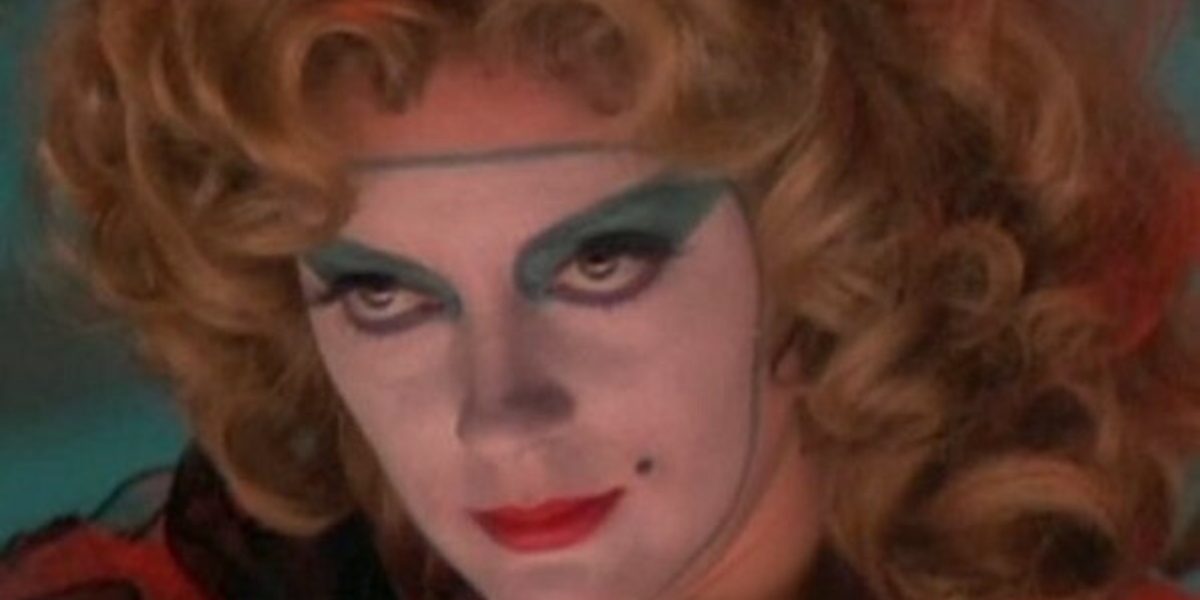
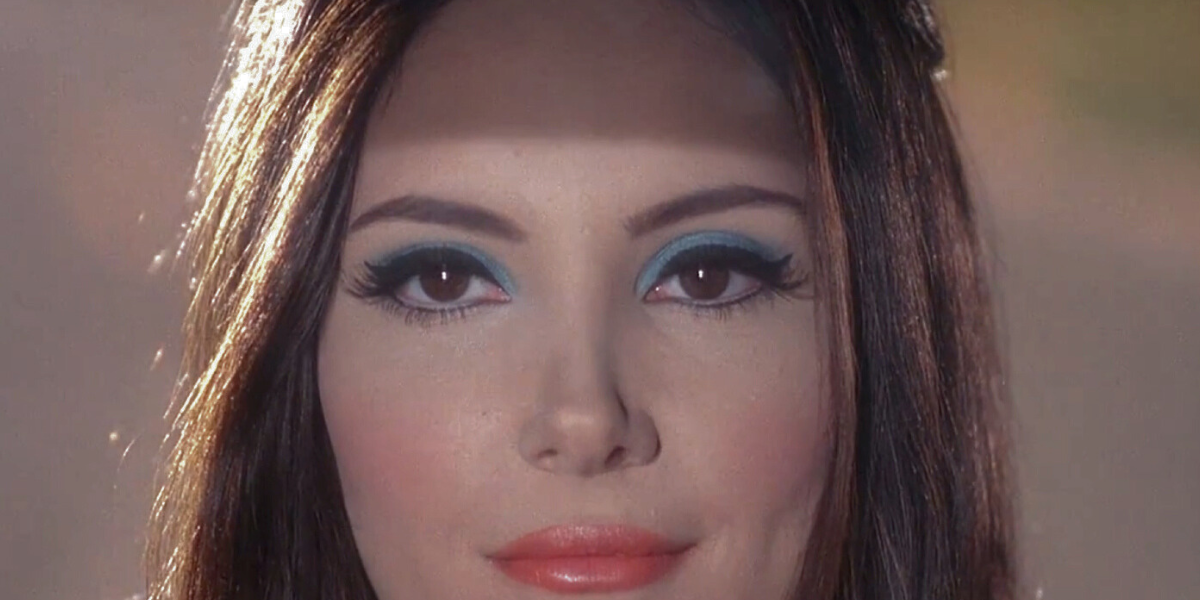
Divine wields a pistol in Pink Flamingos , Maxine Minx puts her foot to a pedal in X, and Angelina Jolie’s character in Hackers breaks the law, all while boldly wearing blue eyeshadow. Elaine poisons and stabs men in The Love Witch with jewel-like turquoise and amethyst shades; Dr. Frank-N-Furter fucks and dances and kills her way through The Rocky Horror Picture Show in garage door-style, dark blue lids; Janet Weiss in the same film wears a white face with red lips and blue eyeshadow after experiencing a sexual awakening and also cannibalism; and Lady Gaga, in the new trailer for Joker 2: Folie À Deux commits arson and traipses across a stage that presumably exists only in her and her lover’s mind with glittering blue, clownish eyeshadow. Between Divine, Dr. Frank-N-Furter, Janet Weiss, Harley Quinn, and subtextual in my opinion, Jolie (as a real life bisexual), five out of seven of these characters are canonically queer, and five out of seven of them are killers, but not the same five. In Janet Weiss, we get a shy, Midwestern, compulsorily heterosexual queer, who discovers herself between her experiments in bed, in order to emerge anew on stage, at home under the spotlight, eyelids dazzling blue. In Janelle Monáe’s Dirty Computer film, Monáe becomes android Jane 57821 seeking to escape a totalitarian and homophobic society, often donning bold, deep eyeshadows, including blue.
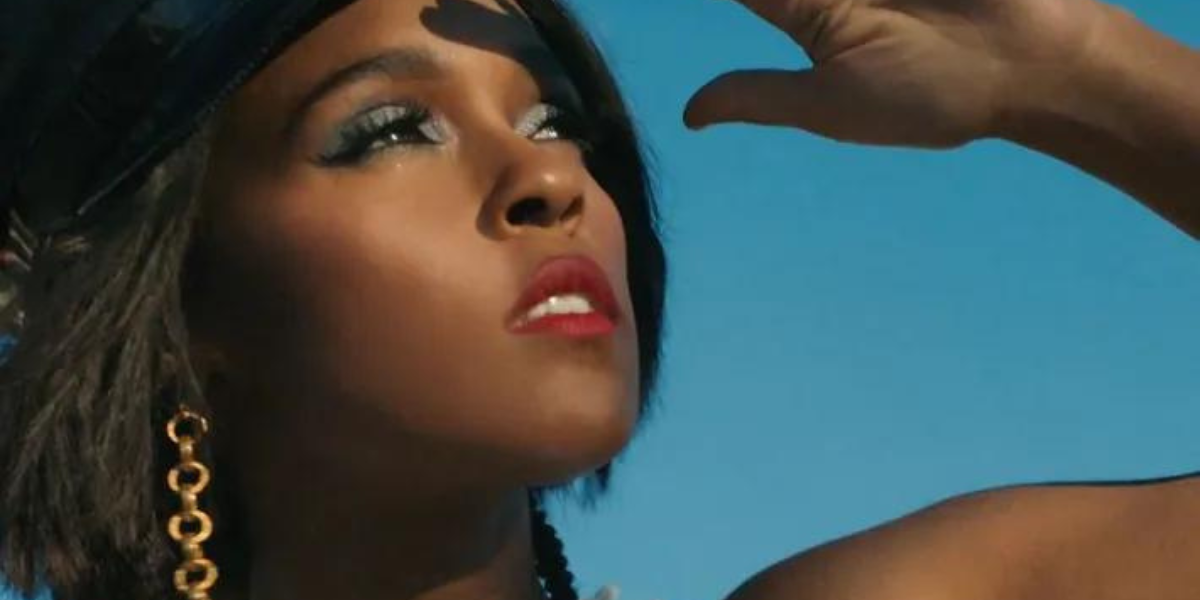
These often darker shades of blue are bold, and, as this content creator points out, self-possessed. As Zara Kiiwii points out, blue eyeshadow often signifies a descent into madness, as much as it signals badassery. For women and trans people who are trying to escape the crushing weight, as well as, often, the psychological and physical abuse of men and people in power, breaking away is not necessarily a clean break. It comes at a cost, and these characters come into their identities and what power they can scrape together for themselves with an external marker on their eyes that clues the audience into just what breaking the rules has actually cost these women long-term.
Blue Eyeshadow as the Azure Eyelids of the Midwest Princess Herself
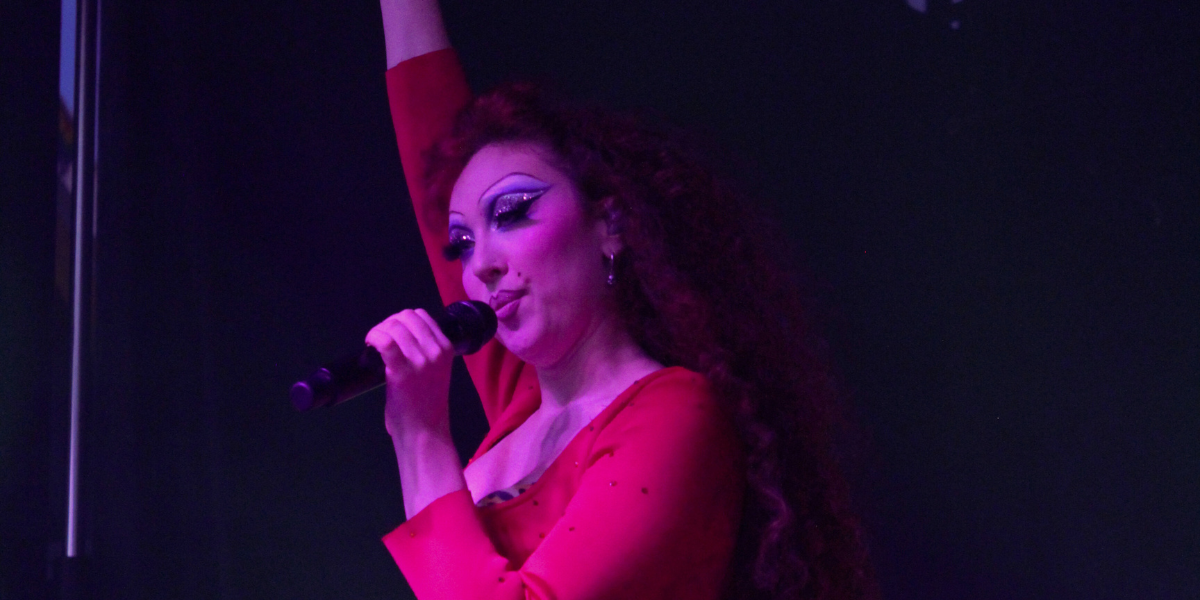
In her makeup’s startling resemblance to Janet Weiss, Divine’s, and others before her, Chappell Roan captures the working class, night club, unhinged queer drag queen undertones of blue eyeshadow all at once. She alchemically assumes all of the history of blue eyeshadow and transmutes it into a distinctly queer and over-the-top pop performance. The legacy is clear. In conversation with Trixie Mattel, a favorite drag queen of the lesbians, Mattell says to Roan, “There’s always been this dialogue between pop stars and drag queens. I feel like you’re the missing link, because you’re part pop star, part drag queen.” And when Mattell acknowledges the way being Midwestern “creeps into” Roan’s work. Chappell Roan responds:
“I see it in my fashion references. Truly, I am not trying to be a chic bitch. I love the chic bitches, but I am not trying to be like that. Nothing turns me off more than frickin’ luxury brands. I feel like that is, at least where I grew up, Victoria’s Secret was a luxury brand. I’m not kidding, that’s luxury. Like, Miss Me Jeans. I feel like it comes out in my fashion. It comes out in how I speak. I’m very, very grateful for being from the Midwest. I think it’s very easy to think of the Midwest and South as a monolith. I’m just like, ‘No, bitch, there are queens everywhere, regardless if you think there are or not.’ There are queer people everywhere in these teeny tiny towns who are the same as the bitches on the coasts. They just don’t have access to what those girls have. I’m so grateful, because I’m like, no, the flyover states are not just Trump country. There are people desperately wanting to leave like you and me.”
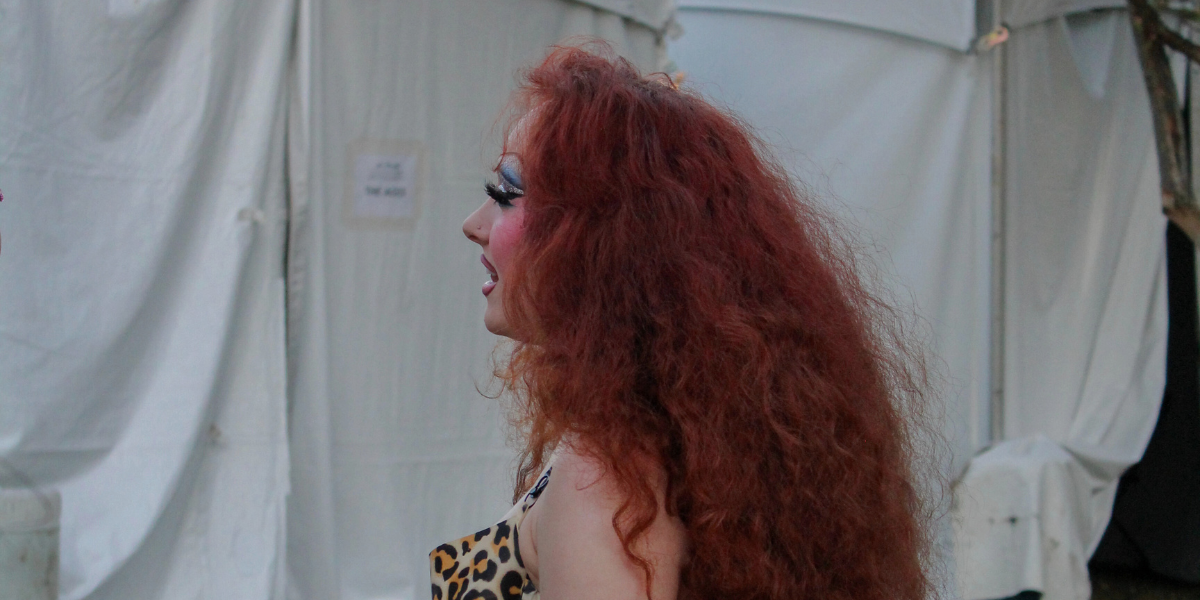
Blue eyeshadow is the color of people who are “trying to leave,” who have left, who dream of something more, who long, who push, who prod and deviate. In 2024, as we hear talk of Project 2025, as we see the Supreme Court strip away gay, trans, reproductive and women’s rights, as we tally up the dollars we’re forking over for basic necessities, it can feel like we’re all spiraling downwards, collectively manipulated and hurt by the ruling class. It’s no surprise that this environment is giving rise to a trend where we paint ourselves with the color of escape, of disobedience. We’re being called groomers by actual pedophiles, getting attacked in the street on our way to and from menial jobs, and exchanging messages in mutual aid signal loops. Blue eyeshadow and everything it represents makes perfect sense in this moment.
When you go to paint your eyes with the shade of the summer, I hope you’ll carry a little bit of Divine, of all the rule-breakers and nonconformists and survivors who have made this color read the way it does to us queers. It’s no coincidence that blue eyeshadow has found its way into our collective experience this year, and though it seems funny to say, I think there’s a way to embrace the trend, while also acknowledging its roots in resisting assimilation politics, in marginalized, queer, and trans people making our own lives for ourselves on the edges of society — and of taste. Maybe filth should be our politics, because when you attempt to criminalize what you perceive of as deviance, queerness will demand that deviance, instead, becomes a way of life.



Yes, I definitely had all this in mind when I wore light purple eyeshadow on work video calls early in my transition. Yep, I was totally aware of all that history 😅
I’m trying to embrace taking up space and being a little extra. Maybe I’ll go with blue tomorrow, this was pretty inspiring. I had already figured out that makeup was both for society (to gender me correctly and more easily), and for me (for my own enjoyment, creative time before work, to feel hot). Now I just have to remember which shade of blue bothers my eyes the least 😅
I bet you look awesome in that blue eyeshadow. Thank you for reading and glad you’re inspired!!! <3
As soon as I saw this title, I thought of Michael Stipe (queer icon who has used the word “genderfuck” in more interviews than I thought was possible) performing with the big blue band of eyeshadow across his face!
Oh my gosh – I found the photo. Love this. Yes, awesome addition to the Queer Blue Eyeshadow crew.
Shirley Manson in the Garbage video for Only Happy When It Rains: https://media1.tenor.com/m/GFnulXVKycEAAAAd/garbage-garbage-music.gif
That blue eyeshadow eyes was just beautiful!!
hello